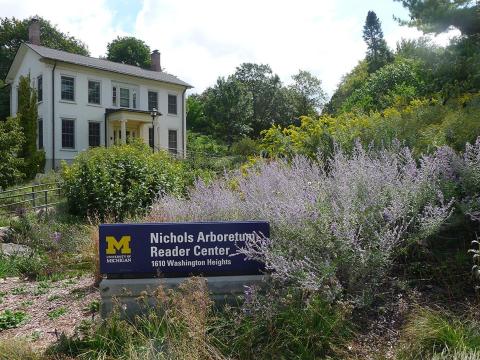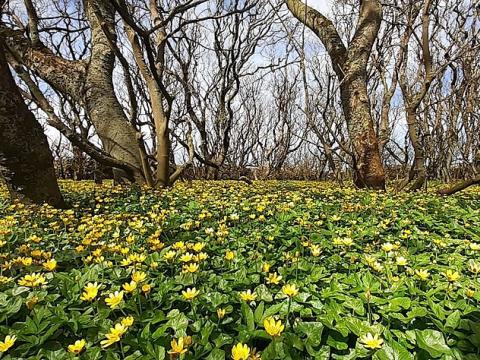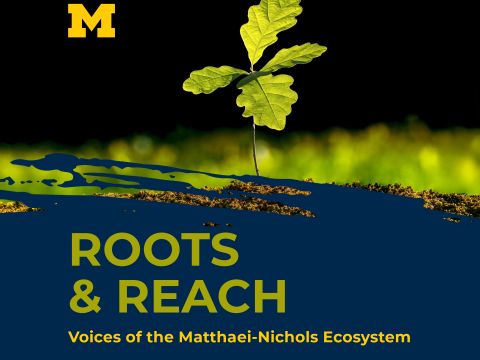Nestled away in greenhouse two at Matthaei Botanical Gardens, boxes of plants simulating sedge meadows are growing deep roots this summer. Katherine Harpenau, an undergraduate researcher in Dr. Selena Smith’s paleobotany lab has planted these wetland reproductions to study how sedges can impact ecosystem services and inform restoration efforts.
Wetlands are threatened by a variety of factors, including nutrient runoff from lawns and agricultural operations. This excess of nutrients can promote the growth of invasive species and disrupt the delicate ecosystem balance. Inspired by her work with wetland restoration in the salt marshes of New Zealand, Harpenau returned home ready to apply what she learned. “We were planting this really fibrous species of sedge to withstand the salty tides. And I thought: ‘the adaptive capacity of these plants is just amazing. How can we use these characteristics of sedges to help wetland restoration in Michigan?’”
With her research here at Matthaei, that is exactly what she is trying to find out. In each growing box, she planted Lake Sedge (Carex lacustris) in different abundances alongside other native wetland species to better understand how sedges can impact nutrient cycling. Each plot is amended with a nitrate solution, one of the main nutrients in agricultural runoff. When the experiment finishes this fall, she will measure the nutrient content of the leaves and soil to understand how different abundances of sedge are impacting their ecosystems: “We will be able to see where the nutrients are standing. Are they being left in the soil where they can be taken up and used by more invasive plants? Or are they actually in the sedges, helping cycle the nutrients?”
Katherine has clear goals for the applications of this research. “I want to help stewards make more informed decisions about the plant types they're using in sedge meadow restoration, and the abundances they're using. Because, as I found, when transplanting these plants into unfamiliar environments it is difficult to get them to establish and succeed.”
Though we’ll have to wait a while longer for her official findings, Harpenau has already gained valuable insights from the challenges of creating a wetland in a box. “It's very difficult to replicate how these communities are in the natural environment. And I think it's telling for how long we decide to let wetlands endure before we step in and try to restore them, because it just gets harder when they're degraded.
As for the broader implications of this research, she is less concerned with what wetlands can do for us, and more interested in what the sedges can do for wetlands.
“A lot of people frame wetland restoration in terms of ecosystem services provided to humans. And definitely, water cycling is super important, and a lot of these wetlands have a huge hydrologic impact. But with this project, I mostly wanted to frame it around ecosystem services for the community itself. These plants are just amazing; their roots are submerged in water for part of the season, they have to find oxygen where they can, the water levels are fluctuating, and they have to survive in conditions that humans would likely not want to be in. So I want to frame this work around providing better ecosystem services for these communities themselves. Not necessarily what they provide to humans.”




